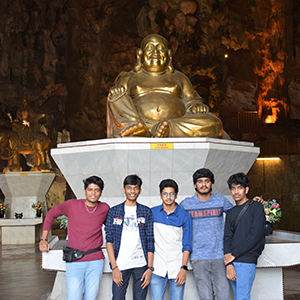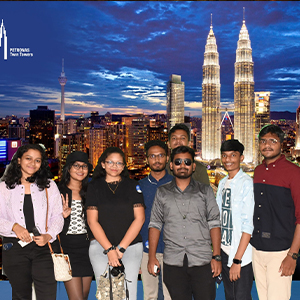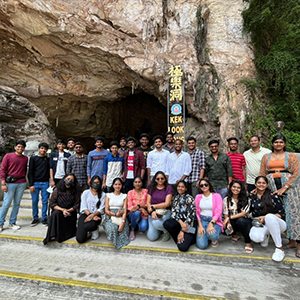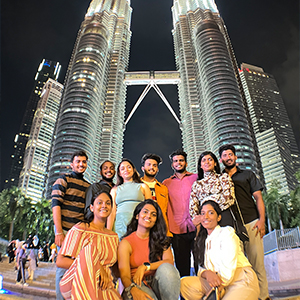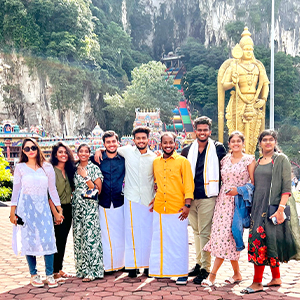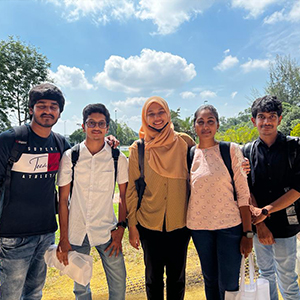Delay-Tolerant IoT enabled smart agriculture system

Agricultural development is one of the powerful tools to boost the economy of any developing country. The recent advancement of IoT-based smart agriculture systems helps to achieve more productivity with relatively less overhead. The Department of Computer Science and Engineering is glad to announce that their faculty; Dr Sobin CC, Associate Professor; Dr Sonam Maurya, Assistant Professor; and Dr Amit Kumar Singh, Assistant Professor; have published a patent titled “Smart Agriculture System using Delay Tolerant Internet of Things” (Application No. 20224102799), a framework for smart agricultural applications using Delay Tolerant Internet of Things (DT-IoT) which can handle the issues related to disruptions in network connectivity.

The inherent limitations of IoT-based smart agriculture systems majorly in terms of resource constraints, frequent network disconnections and vulnerability to many attacks may affect their advantages over the traditional systems. The application using DT-IoT, with access to greater network connectivity can deliver relevant data in real-time. Furthermore, the stored data can be processed and analysed to help farmers in making critical decisions related to their farm filed. Hence, their innovation focuses on designing and developing a prototype for a smart agricultural application using the Internet of Things (IoT).
One of the simplest outcomes of providing smart agricultural solutions for remote villages in India will be greater support to the farmers to improve their productivity and better decision-making in cultivation. But advanced technologies need Internet connectivity in the field to function, which is still a dream in many of the remote villages in India. The lack of proper communication facilities faces off the application of IoT networks. This fact has motivated them to propose a smart agricultural system to work on agricultural application issues using delay-tolerant characteristics. The use of delay-tolerant features in traditional IoT provides a solution for smart agriculture which can handle issues related to disruptions in connection to improve communications.
Another important aspect is that many of the applications, including IoT/Sensor networks, are either simulation-based or experimental. A very few of the applications are developed and implemented in the real-time field for the benefit of farmers in remote villages. In most of the remote villages in India, most of the farmers are poor, many of them are even without primary school education and they rely mostly on traditional agricultural practices which they received from their previous generations. Therefore, their study proposed to test and implement the smart agricultural system with real-time automated solutions related to irrigation, controlled fertilisation, cultivation, production quality, quantity, crop health etc. using IoT with delay-tolerant support. They are also in the process of collaborating with academia and industry to execute this project.
Social Implications
- Proposed smart agriculture system will assist in real-time monitoring of farm field conditions, like irrigation, soil quality, and nutrient deficiency.
- It provides support to farmers to improve their productivity and decision-making in crop cultivation.
- The proposed system will provide optimization in terms of seed selection, resource utilisation, planning cultivation, marketing, harvest quality, etc., using Machine Learning techniques.
- Agricultural field data analysis (for data collected by the large group of sensors) and its visualisation.
- Weather prediction (for better planning).
- Price prediction (for better marketing strategies).
Fig 1: Main components of the proposed Smart Agriculture System
Fig 2: Illustration of 3-level architecture implementation in the Smart Agriculture System
- Published in CSE NEWS, Departmental News, News, Research News
Highly stable ruthenium catalyst for hydrogen evolution reaction

The Department of Physics is glad to announce that Prof Ranjit Thapa and his PhD scholar, Mr Samadhan Kapse, have published a patent titled “Highly Stable Ruthenium Single-Atom Catalysts on Fe3O4/MWCNTs for Hydrogen Evolution Reaction” (Application no. 202241006087). The research was done in collaboration with Ms Shwetha K R, Mr Shivanna M and Dr Nagaraju D H, from the Department of Chemistry, School of Applied Sciences, REVA University, Bangalore.
A Brief Description of the Research
In the current work, Fe3O4 nanoparticles were prepared by a simple chemical co-precipitation method under an inert atmosphere, and it was utilised for HER studies. Ru nanoparticles were profitably deposited over Fe3O4/MWCNTs modified glassy carbon electrode by the electrochemical deposition technique. The superior HER activity was achieved on Fe3O4/MWCNTs/Ru in 0.1M H2SO4 aqueous media. We demonstrated that synthesised electrocatalyst offers low over potential 101 mV to reach a current density of 10 mA cm-2 towards hydrogen evolution reaction. It displays exceptional stability and finds to be of no change in the HER activity despite 1000 cycles. It is emphasised that a small weight percentage of ruthenium in the prepared catalyst can replace high-cost platinum in renewable energy technologies.
Social Implications of the Research
Production of renewable energy has greater significance in the present situation owing to the impact of the depletion of non-renewable energy resources such as fossil fuels and the release of greenhouse gases into the atmosphere. Hydrogen has gained considerable interest as an energy storage and energy carrier due to its high energy density (146kJ/g), and its utilisation also eliminates pollution and toxicity. Several methods have been explored to produce molecular hydrogen. Among them, the electrolysis of water is the best way to produce high purity hydrogen from water. An excellent electrocatalyst is obligatory to liberate hydrogen gas effectively from water. It is known that Superior HER activity has been achieved using platinum (Pt) and Pt-based catalysts. Due to its high cost and low surplus, its expansion has been limited to the industrial scale. The research proposes that Ru-based catalysts can overcome these challenges.
DFT study is more effective to find the origin of catalytic activity in materials for designing highly promising catalysts for various catalytic reactions. The researchers expressed their gratitude to SRM University-AP for providing the required computational facility and support.
- Published in Departmental News, News, Physics News, Research News
Nature-inspired Seagull Optimisation Approach algorithm
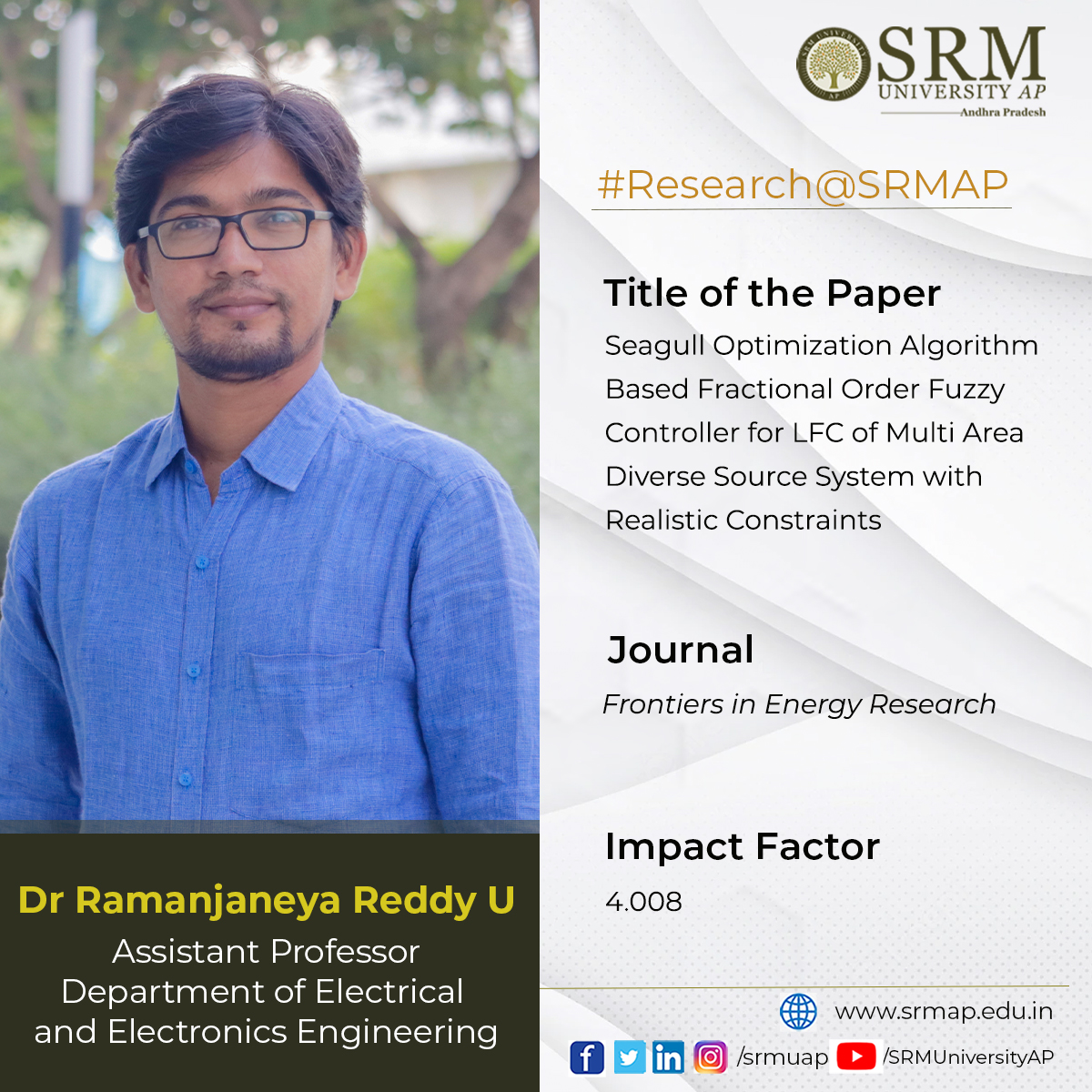 In modern days, the most potent ancillary service is the LFC, especially for controlling and operating interconnected power system networks. The electrical system is becoming more complex due to the integration of several diverse sources generating units to meet the variable load demand. Research in the Department of Electrical and Electronics Engineering is currently working on this area. Assistant Professor Dr Ramanjaneya Reddy recently published a paper titled Seagull Optimization Algorithm Based Fractional Order Fuzzy Controller for LFC of Multi Area Diverse Source System with Realistic Constraints in the Frontiers in Energy Research journal. It is published in the Smart Grids section of the journal with an impact factor of 4.008.
In modern days, the most potent ancillary service is the LFC, especially for controlling and operating interconnected power system networks. The electrical system is becoming more complex due to the integration of several diverse sources generating units to meet the variable load demand. Research in the Department of Electrical and Electronics Engineering is currently working on this area. Assistant Professor Dr Ramanjaneya Reddy recently published a paper titled Seagull Optimization Algorithm Based Fractional Order Fuzzy Controller for LFC of Multi Area Diverse Source System with Realistic Constraints in the Frontiers in Energy Research journal. It is published in the Smart Grids section of the journal with an impact factor of 4.008.
Abstract
This paper initiates the implementation of fractional order (FO) fuzzy (F) PID (FOFPID) controller fine-tuned using a seagull optimisation algorithm (SOA) for the study of load frequency control (LFC). Initially, the SOA tuned FOFPID regulator is implemented to the widely utilized model of dual area reheat-thermal system (DARTS) named as test system-1 in this work for a perturbation of 10% step load (10%SLP) on area-1. Dynamical analysis of the DARTS system reveals the viability of SOA tuned FOFPID control scheme in regulating frequency deviations effectively compared to other control schemes covered in the literature. Later, the presented regulator is implemented in multi-area diverse sources (MADS) system possessing realistic constraints in this paper termed test system-2. The sovereignty of the presented FOFPID controller is once again evidenced with controllers of PID/FOPID/FPID fine-tuned with the SOA approach. Moreover, the effect of considering practical realistic non-linearity constraints such as communication time delays (CTDs) on MADS system performance is visualized, and the necessity of its consideration is demonstrated. Further, AC-DC lines are incorporated with MADS system to enhance the performance under heavy load disturbances and the robustness of the proposed regulatory mechanism is deliberated.
Explanation of the research
The operating point of the generation unit must be altered to keep the real power mismatch (RPM) as minimum as possible. RPM is the exact difference between the amount of real power generated by the generation units and the existing load demand. This RPM is the direct analogy to one of the power full parameters in the interconnected network, frequency. Thus, the minimisation of RPM should be monitored continuously as there will be continuous fluctuations in load demand. This must be done automatically. Otherwise, the real power mismatch may worsen and affect the power system frequency. Frequency regulation must be made with the utmost care; if not, it adversely affects the power system stability. LFC will quickly and automatically accomplish this task.
From the literature on LFC, it is apparent that the optimisation-based controllers significantly handle LFC performance. Hence, applications of new optimisation algorithms for solving realistic power system problems are always welcome. In this regard, this paper implements a new nature-inspired seagull optimisation approach (SOA) algorithm. It is a maiden attempt, especially for power system operation and control of IPS with practical constraints. Until now, the regulators presented by the researchers are tested on linearised and non-linearised power system models without and with integrating renewable energy units. To authenticate the investigative analysis of LFC closer to the nature of the realistic practice, the researchers must adopt the non-linearity constraints with power system models. Constraints of non-linearity like GRC and GDB are considered widely by the researchers and paid less attention to other constraints of CTDs.
In realistic practice, IPS are widely spread and employs numerous sensing and phasor measurement devices. The measured data will be transmitted and received among different devices located at distant places via communication peripherals. Exchange of information won’t be done instantly, and a specific time delay exists. The delay might affect the IPS performance; hence, this paper tried to investigate the predominancy of time delays in coordination with the constraint of GRC. Little work is available on studying LFC with CTDs and is restricted up to the implementation of traditional regulators. Thus, this paper addresses the impact of realistic constraint parameter that is CTDs on IPS performance in coordination with GRC under fuzzy aided FO-based regulator based on the newest optimization algorithm.
Practical implementations of the research
This work considered two different power system networks to assess the FOFPID controller performance. One is DARTS, termed test system-1, and the other is MADS, termed test system-2. DARTS model incorporates thermal units of reheat-type turbines in both areas with equal generation capacities. On the other hand, the MADS system that tests system-2 consists of two areas having Thermal-Hydro-Gas units in area-1, and area-2 comprises Thermal-Hydro-Wind units. The participation factor for each source of generation unit is allocated to achieve smooth load distribution and is considered as 0.6225 for thermal, 0.3 for hydro unit, and a factor of 0.075 for gas/wind unit. The required data to build the DARTS system depicted in Figure 1 and MADS system model depicted in Figure 2 are considered from [13] and [35], respectively. The power system models are designed in the (R2016a) version of MATLAB/SIMULINK.
In the future, there is a lot of scope for assessing the effect of CTDs on LFC performance and the implementation of SOA-based FOFPID for optimising IPS in the restructured environment.
- Published in Departmental News, EEE NEWS, News, Research News
Internet of Things – Security and Privacy in Cyber Space
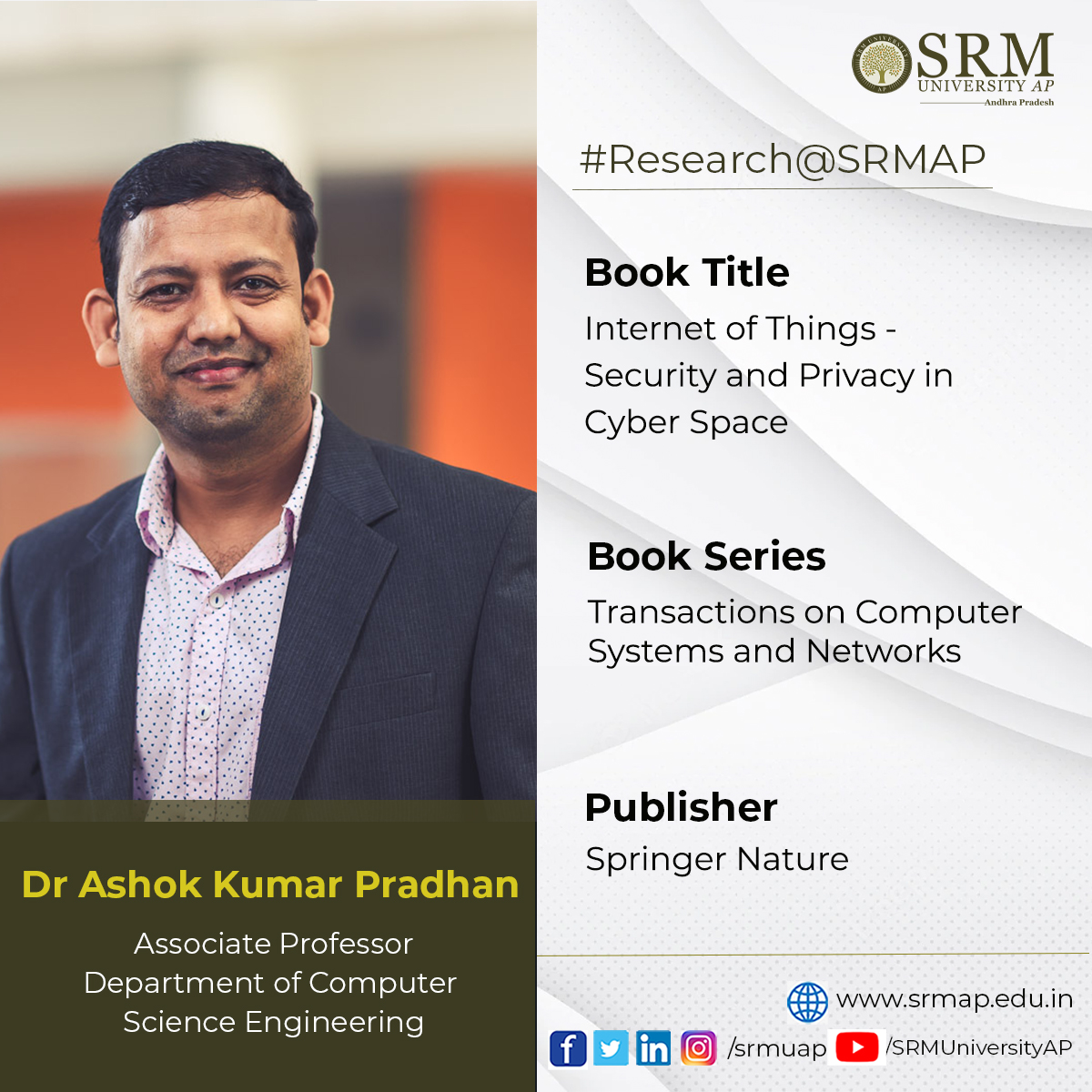 Transactions on Computer Systems and Networks is a unique series that aims to capture advances in the evolution of computer hardware and software systems and progress in computer networks. Associate Professor Dr Ashok Kumar Pradhan, Department of Computer Science and Engineering, becomes a part of this book series by publishing the book titled Internet of Things- Security and Privacy in Cyber Space. Edition 1 of the book was launched on May 27, 2022, under the publishing house Springer Nature. The series aims to present leading works on advances in theory, design, behaviour, and applications in computing systems and networks.
Transactions on Computer Systems and Networks is a unique series that aims to capture advances in the evolution of computer hardware and software systems and progress in computer networks. Associate Professor Dr Ashok Kumar Pradhan, Department of Computer Science and Engineering, becomes a part of this book series by publishing the book titled Internet of Things- Security and Privacy in Cyber Space. Edition 1 of the book was launched on May 27, 2022, under the publishing house Springer Nature. The series aims to present leading works on advances in theory, design, behaviour, and applications in computing systems and networks.
This book covers major areas of device and data security and privacy related to the Internet of Things (IoT). It also provides an overview of lightweight protocols and cryptographic mechanisms to achieve security and privacy in IoT applications. Besides, the book also discusses intrusion detection and firewall mechanisms for IoT. It also covers topics related to embedded security mechanisms and presents suitable malware detection techniques for IoT. The book also contains a unique presentation on heterogeneous device and data management in IoT applications and showcases the major communication-level attacks and defense mechanisms related to IoT.
The book is beneficial for the students who pursue under graduation, post-graduation, and PhD as a reference to get the fundamental as well as research ideas about IoT/ cyber security/ Blockchain technology and their application areas.
- Published in CSE NEWS, Departmental News, News, Research News
DST-INSPIRE fellowship expert committee meeting to be held at SRM University-AP
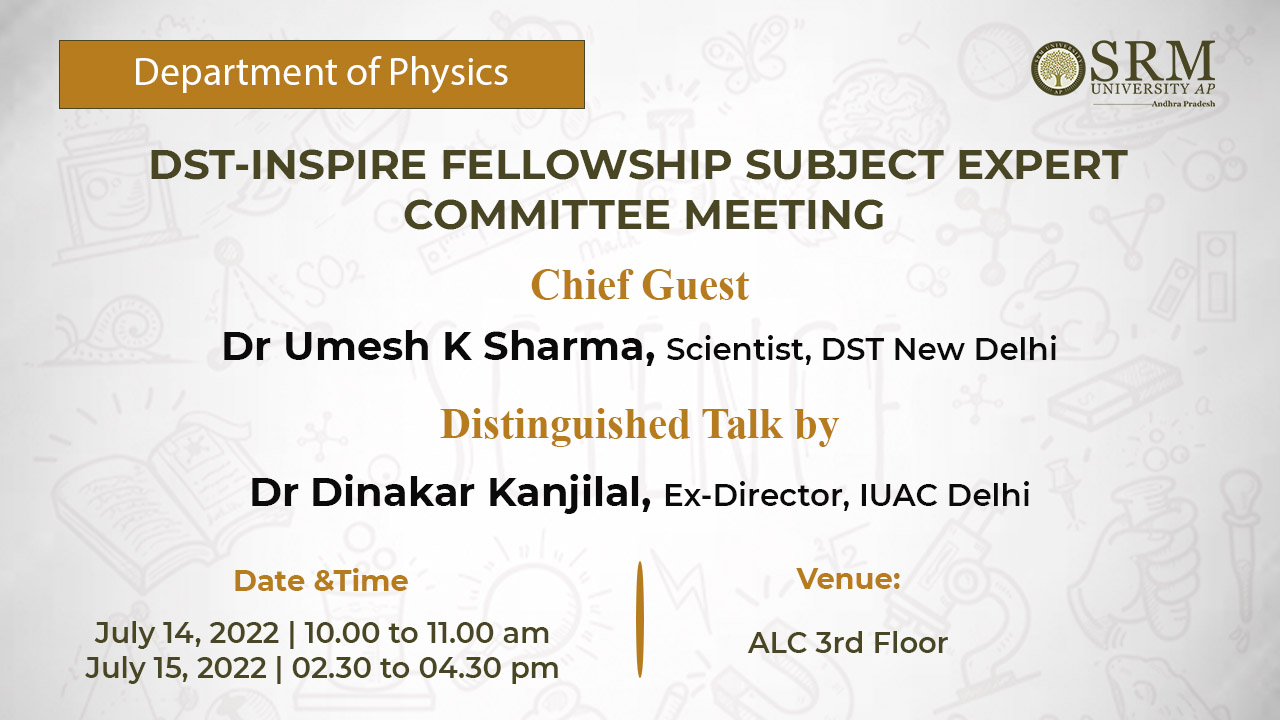
“Innovation in Science Pursuit for Inspired Research” (INSPIRE) programme is a flagship initiative of the Department of Science and Technology (DST) to persuade young and talented science enthusiasts to pursue various fields of sciences and instigate quality research to strengthen the Science and Technology network of the country.
INSPIRE fellowship is one of the important components under the purview of INSPIRE programme to attract Science graduates to undertake Doctoral research in both basic and applied sciences. The fellowship enables the aspirants to pursue research at any recognized university or institute in India.
SRM University-AP is glad to host the subject expert committee meeting on July 14 & 15, 2022, to select the meritorious candidates for the DST-INSPIRE fellowship 2022 to pursue PhD in physics at any recognized institute across the country. During the meeting, the expert committee will list out the most deserving candidates among scores of applicants from all over the country.
As part of the event, an interactive session has been scheduled with the eminent scientist Dr Umesh K Sharma, DST New Delhi. He would cast light on the scopes and opportunities of pursuing doctorate with an INSPIRE fellowship. A talk by Prof Dinakar Kanjilal, Ex-Director IUAC Delhi, will also be organized to give the faculty and students a comprehensive understanding of the same.
Distinguished Members of the DST INSPIRE Meeting
Dr Umesh K Sharma
Dr Dinakar Kanjilal
Dr G Vijaya Prakash
Dr Anandamayee Tej
Dr Rajendra
Dr Arijit Chowdhuri
- Published in Departmental Events, Events, Invited Talks, Physics
Sustainable biorefinery approaches for a circular economy
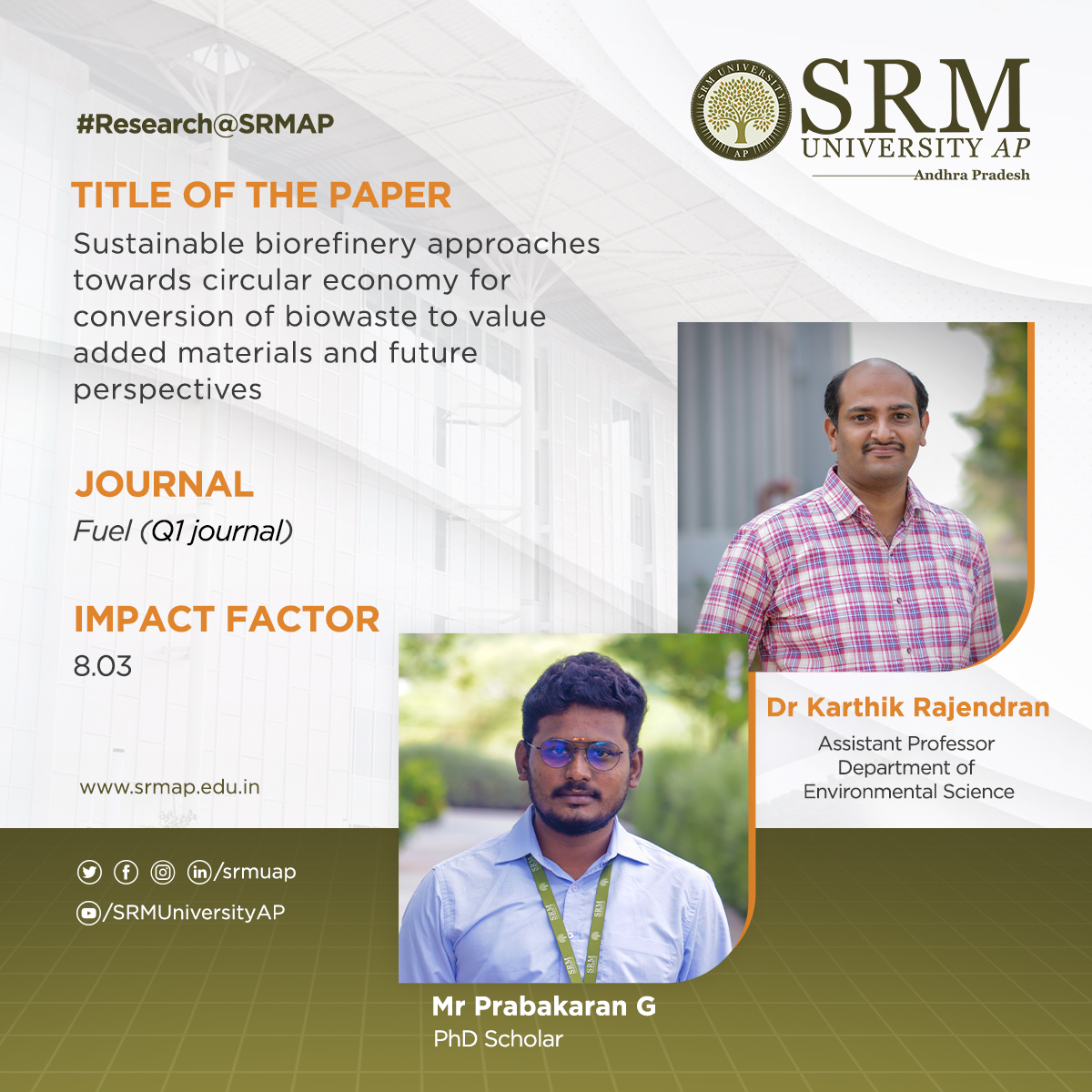 Worldwide, 1.3 billion tons of bio-waste are generated annually. By 2025, this is predicted to be increased by 2.2 billion tons/year. The emerged biowaste biorefinery has proved as a sustainable approach for integrated bioproducts, such as bioenergy, biopolymers, biochemicals, bioplastics, and biofertilizers further used for industrial, commercial, agricultural, and energy applications. Integrating biorefinery concepts into biowaste management is promising for a circular bioeconomy. Recent research at the Department of Environmental Sciences investigates the potential of sustainable biorefinery approaches. Assistant professor Dr Karthik Rajendran and his PhD scholar Mr. Prabakaran G published a paper, Sustainable biorefinery approaches towards circular economy for conversion of biowaste to value added materials and future perspectives, in Fuel, a Q1 journal, with an impact factor of 8.03. For this paper, they have collaborated with Dr Mukesh Kumar Awasthi from the College of Natural Resources and Environment, Northwest A&F University, China.
Worldwide, 1.3 billion tons of bio-waste are generated annually. By 2025, this is predicted to be increased by 2.2 billion tons/year. The emerged biowaste biorefinery has proved as a sustainable approach for integrated bioproducts, such as bioenergy, biopolymers, biochemicals, bioplastics, and biofertilizers further used for industrial, commercial, agricultural, and energy applications. Integrating biorefinery concepts into biowaste management is promising for a circular bioeconomy. Recent research at the Department of Environmental Sciences investigates the potential of sustainable biorefinery approaches. Assistant professor Dr Karthik Rajendran and his PhD scholar Mr. Prabakaran G published a paper, Sustainable biorefinery approaches towards circular economy for conversion of biowaste to value added materials and future perspectives, in Fuel, a Q1 journal, with an impact factor of 8.03. For this paper, they have collaborated with Dr Mukesh Kumar Awasthi from the College of Natural Resources and Environment, Northwest A&F University, China.
Biorefinery is designed to improve the economic potential and achieve a circular bioeconomy by integrating various technologies such as pyrolysis, anaerobic digestion, gasification, incineration, and aerobic composting to gain energy, nutrients, and material recovery. Biowaste biorefinery contributes as a driving force to cope with challenges of resource scarcity, climate changes, and increased demand. The sustainable biorefinery approaches toward circular bioeconomy require a comprehensive understanding of the biowaste across the value chain. Based on the carbon neutralized biowaste biorefinery concept, this paper explained biowaste generation and utilization as a renewable resource through biorefinery techniques from the perspective of energy, nutrients, and material recovery. Meanwhile, clarify the implementation status, public engagement, and prospects of biowaste recycling with the central concept of biorefinery circular bioeconomy.
Abstract
With the colossal energy demand inevitably exacerbating the non-renewable resources depletion and ecological-social challenges, renewable energy has become a crucial participant in sustainable strategy. Biorefinery emerged as a sustainable approach and recognized promising transformation platforms for products to achieve a circular bioeconomy that focuses on biomass efficiency and sustainable valorisation, promotes resource regeneration, and restorative. The emerged biowaste biorefinery has proved as a sustainable approach for integrated bioproducts and further applied this technology in industrial, commercial, agricultural, and energy sectors. Based on carbon-neutral sustainable development, this review comprehensively explained biowaste as renewable resource generation and resource utilisation technologies from the perspective of energy, nutrient, and material recovery in the concept of biorefinery. Integrating biorefinery concepts into biowaste management is a promise for the conversion of biowaste into value-added materials. It contributes as a driving force to cope with resource scarcity, climate changes, and huge material demand in a circular bioeconomy. In practice, the optimal of biorefinery technologies depends on environmentally friendly, economic and technical feasibility, and social and policy acceptance. Additionally, policy interventions are necessary to promote biowaste biorefinery implements for a circular bioeconomy and contribute to a low-carbon cleaner environment.
- Published in Departmental News, ENVS News, News, Research News
Familiarisation Programme at UTP Malaysia
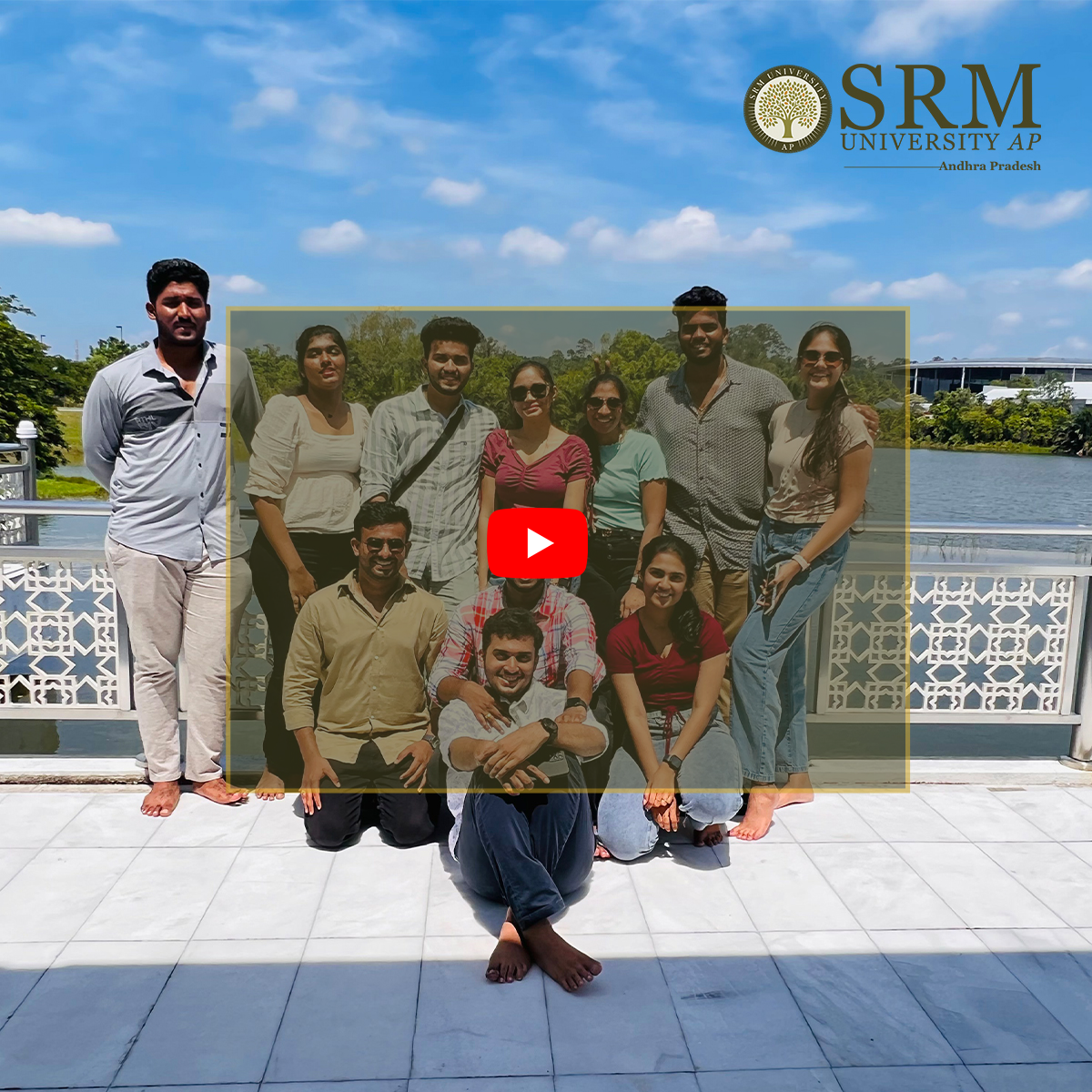 Students from the second batch of students from SRM University-AP, Andhra Pradesh, has completed the Familiarisation Programme at Universiti Teknologi PETRONAS (UTP), Malaysia in the month of June. This is part of Global Immersion facilitated by the Office of International Relations and Higher Studies at SRM AP.
Students from the second batch of students from SRM University-AP, Andhra Pradesh, has completed the Familiarisation Programme at Universiti Teknologi PETRONAS (UTP), Malaysia in the month of June. This is part of Global Immersion facilitated by the Office of International Relations and Higher Studies at SRM AP.
Students and faculty mentors from SRM AP participated in several on and off-campus activities such as campus tours, cultural exchange, and recreational activities in UTP Malaysia. There were educational trips to Kuala Lumpur and PETRONAS Twin Towers. The students were accompanied by Dr Ashu Abdul , Assistant Professor at SRM University-AP.
In the five-day programme, SRM University-AP students enrolled in two non-credited courses – Introduction to Technical Reporting & Latex Scripting and Data Analysis with R Statistics. The students were introduced to UTP’s facilities, programmes, research capabilities, and campus life as a part of the Familiarisation Programme.
UTP Centre for Student Development (CSD) thanked SRM University-AP for entrusting them to provide our students with a global experience by participating in this programme.
- Published in International Relations, IR-News, News


